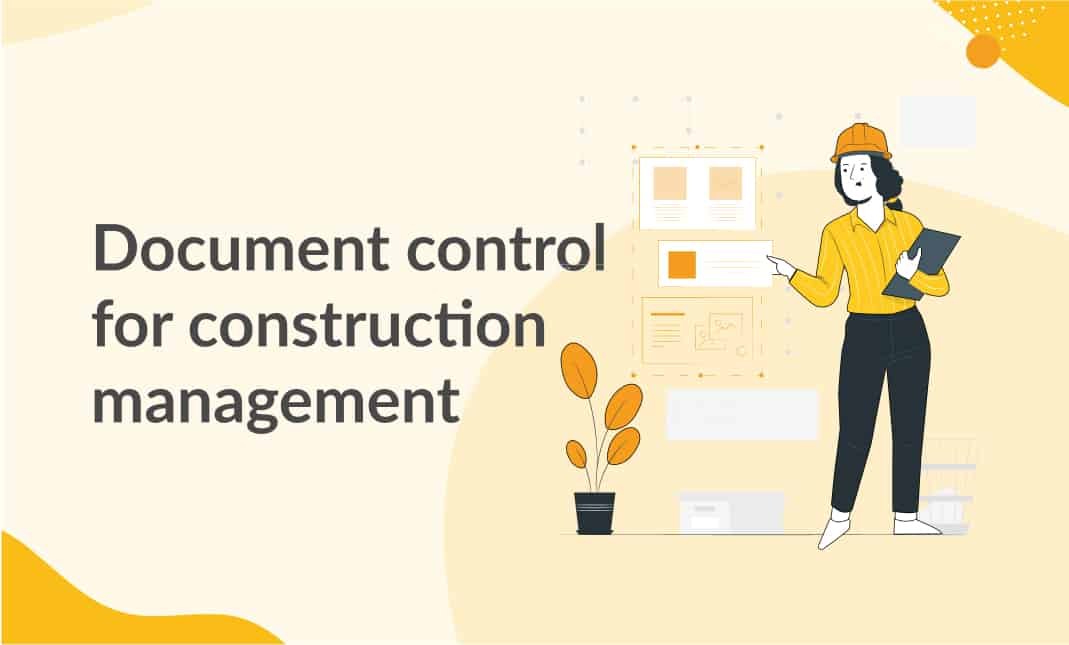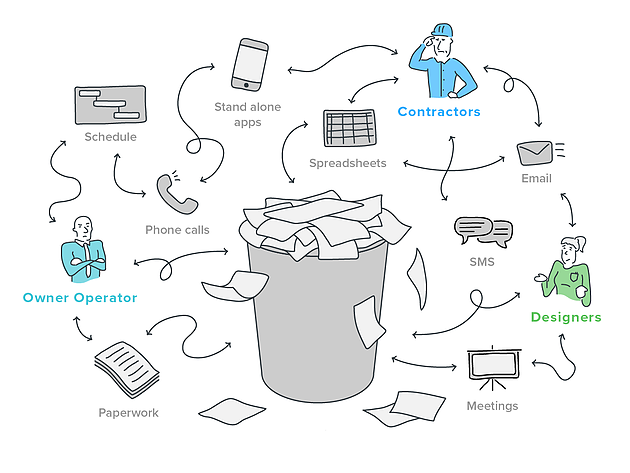Grasping Company: Enhance Performance with Construction Document Management
Grasping Company: Enhance Performance with Construction Document Management
Blog Article
Engineer's Overview to Improving Building And Construction File Administration for Reliable Project Execution
The process of arranging, sharing, and preserving these documents can usually end up being a labyrinth of ineffectiveness and setbacks if not taken care of thoroughly. By exploring methodical approaches, cutting-edge tools, and sector best techniques, architects can not just improve their record administration procedures but additionally pave the means for much more reliable job execution.
Importance of Reliable File Administration
Why is reliable paper management essential for architects in the construction industry? Effective record administration is vital for engineers in the building and construction sector as it plays a crucial duty in making certain the effective execution of projects. Architects deal with a vast selection of documents, varying from style drawings and specs to permits and contracts. Correct company and administration of these files are necessary to keep task timelines, make certain conformity with guidelines, and assist in efficient interaction among project stakeholders.

Reliable record monitoring makes it possible for architects to access critical details promptly, track project progression properly, and mitigate risks related to noninclusions or errors. By carrying out structured record administration processes, engineers can improve partnership with customers, service providers, and various other team members, leading to boosted job results and client contentment.
In addition, effective document monitoring assists architects keep a detailed job background, allowing them to leverage past lessons and experiences discovered for future projects. In today's busy building industry, where prompt decision-making and information sharing are extremely important, effective document monitoring is a foundation for success.
Strategies for Simplifying File Company
Effective document administration practices not only make sure job success for architects in the building industry however additionally lay the foundation for carrying out strategies for enhancing document organization. To simplify file company effectively, designers need to first establish a clear identifying convention for files and folders. Uniformity in naming data based upon task phases, paper kinds, and appropriate details will facilitate simple retrieval and minimize confusion.
Making use of cloud-based storage space services can likewise enhance paper company by giving a centralized place for all project-related documents - construction document management. This allows staff member to access the most current records from anywhere, advertising cooperation and performance. Applying variation control systems additionally fine-tunes file organization by tracking changes, preventing conflicting edits, and making certain that the most up to date variations are constantly offered
Additionally, producing a logical folder structure with marked subfolders for various paper groups, such as agreements, drawings, and specifications, can enhance paper administration processes. Routinely reviewing and removing outdated or repetitive data will aid maintain a lean and well organized file database, eventually boosting efficiency and task results.
Leveraging Modern Technology Equipment for Cooperation
In the realm of modern-day design, engineers are progressively counting on advanced modern technology tools to promote smooth collaboration amongst task stakeholders. Leveraging innovation for cooperation streamlines interaction, boosts efficiency, and enhances total project results. Cloud-based systems such as BIM 360 and Procore allow real-time access to task documents, allowing customers, contractors, and architects to work together properly regardless of their physical location. These click here to read tools assist in simultaneous editing and enhancing, variation control, and instant updates, reducing delays and errors created by miscommunications.
Digital style and building (VDC) software program like Revit and AutoCAD Design allow architects to develop in-depth 3D designs that can be shared and edited collaboratively. This real-time cooperation boosts style visualization, sychronisation, and accuracy, leading to much better decision-making throughout the project lifecycle. In addition, interaction tools like Slack and Microsoft Teams provide immediate messaging, documents sharing, and video conferencing abilities, cultivating smooth interaction among team participants and stakeholders.
Making Sure Accuracy and Variation Control

Efficient version control likewise helps in handling file authorizations and making sure that only licensed personnel make alterations. Designers should develop clear procedures for recording changes, consisting of timestamps and individual recognition, to produce an audit trail for liability. Frequently communicating with the project group concerning version updates and modifications is vital to stay clear of complication and maintain positioning throughout the building and construction process.
Finest Practices for Record Sharing and Access
Having actually developed a durable system for variation control in building and construction paper monitoring, designers can now focus on optimizing file sharing and access methods to enhance collaboration and efficiency amongst task stakeholders. These systems use real-time accessibility to job files, allowing team members best site to view, modify, and comment on documents all at once.
In addition, carrying out role-based access control is important for maintaining data safety and security while helping with collaboration. Appointing various consent levels to employee guarantees that sensitive information is just accessible to authorized workers. Regularly upgrading gain access to approvals based on job demands and group changes is important for preserving data honesty.
Incorporating project monitoring software application published here with document sharing systems can also enhance workflows. This assimilation allows for smooth communication, job tracking, and paper management within a single user interface, minimizing the need to change in between several devices. By following these finest techniques, designers can develop a more effective and joint record sharing environment, inevitably causing effective job implementation.

Final Thought
To conclude, efficient building and construction record administration is important for successful task implementation. By executing techniques for company, leveraging modern technology tools for collaboration, making certain precision and version control, as well as adhering to best techniques for paper sharing and gain access to, architects can simplify their process and improve total job performance. Focusing on these aspects of record administration will certainly cause smoother project implementation and better end results for all stakeholders included.
Efficient record management is essential for designers in the construction market as it plays a pivotal function in ensuring the effective implementation of jobs. construction document management. Appropriate company and management of these papers are vital to maintain job timelines, make certain compliance with laws, and help with reliable interaction among task stakeholders
Efficient paper monitoring practices not only make sure task success for architects in the construction market yet additionally lay the foundation for executing methods for simplifying document organization. One essential method is developing a central document repository where all team members can access the most current variations of drawings, specifications, and other job records.Having established a robust system for version control in building record management, designers can currently focus on enhancing paper sharing and accessibility approaches to boost cooperation and performance amongst job stakeholders.
Report this page